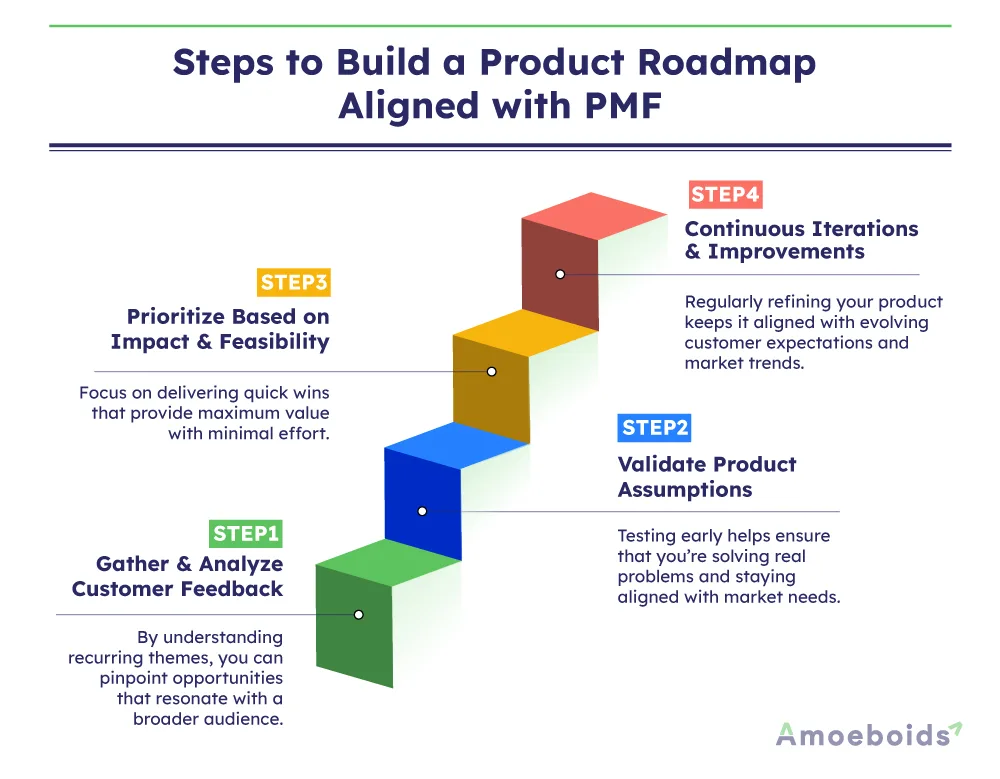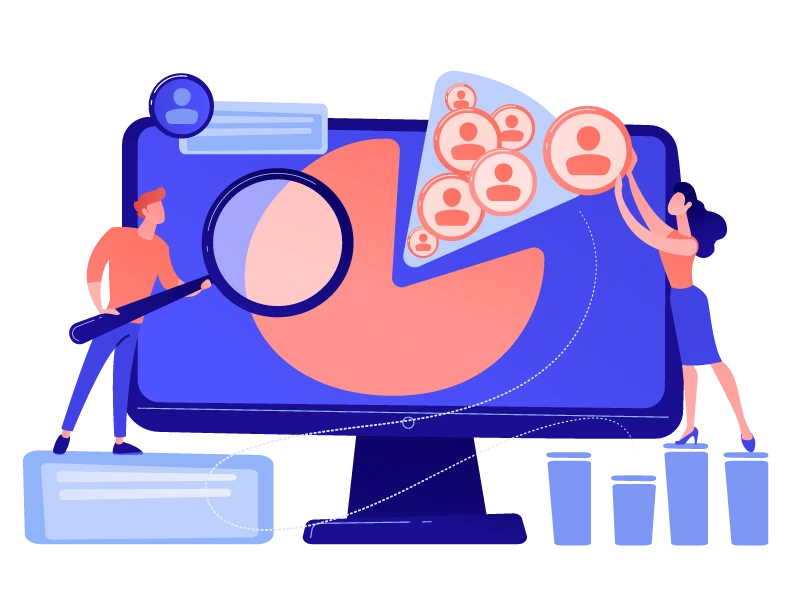For product managers, there’s no dearth of ideas when it comes to what to build next!
On the one hand there is pressure from existing customers & on the other, sales & marketing teams are pushing for addressing adjacent use cases.
Typically, all these ideas & upcoming/ongoing developments are captured on the Product roadmap.
But product managers should not lose sight of the product market fit (PMF). And that’s what we cover in today’s article – How your product roadmap can help you achieve PMF?
Brief definitions first.
What is a Product roadmap?
Product roadmap is a document that provides a quick overview of the direction your product is developing in. It can take many forms. As in, it can be a very high-level roadmap focused only on themes or a bit more detailed outlining quarterly feature deliverables.
There are plenty of types & examples of product roadmaps, but at the core ‘conveying the product development direction’ is what they do.
Understanding Product market fit or PMF
In our beginner’s guide to product market fit, we’ve defined PMF as your product meeting the needs of your market. And people want what you are selling.
According to Marc Andreessen, who popularized the concept, PMF is
“Having a product that fits the market so well that customers are eager to buy it, and the product practically sells itself.”
Why align product roadmap with product market fit (PMF)?
Delivering value & solving for real customer problems is always the real business goal. And here’s how alignment of the product roadmap with product market fit (PMF) helps –
- Feature prioritization – Most critical customer needs remain a focus if your product roadmap is drawn to pursue & sustain the PMF.
- Resource allocation – This alignment will help you gain clarity on high-impact areas & serve as a resource allocation guide.
- Customer satisfaction – Eventually such an aligned product roadmap will result in an enhanced user experience by delivering what your customers want.
- Market competitiveness – As a result, you are staying ahead of the competitors by continuously improving your product.
Steps to Build a Product Roadmap Aligned with PMF
At the intersection of pursuing Product market fit & building a product roadmap, you will find the steps to align them. We’ve tried to list them down below (but we know that they are easier said than done) –

- Gather & analyze customer feedback
Collecting comprehensive feedback from customers is just the first step.
For this rely on surveys, interviews, and support tickets to understand customer needs, pain points, and desires.
You are looking to identify recurring themes & unmet needs by analyzing the above information. For instance, if multiple customers highlight the same challenge, it’s a clear indicator that addressing that issue might help more customers than just a handful.
Tools like NPS (Net Promoter Score) or user feedback platforms can help you systematically gather and prioritize this feedback.
- Validate product assumptions
Following the lean approach, validate your assumptions first & then commit resources to developing new features. Do A/B testing. Conduct experiments through prototypes or run pilot programs to see how your target market responds to new ideas.
For example, if you’re considering a new feature, create a basic prototype or mockup and test it with a small group of users.
Their feedback will help you confirm whether the feature addresses a real need and whether it aligns with your product’s market fit.
- Prioritize based on impact & feasibility
Things are starting to get more tangible now.
With validated ideas in hand, prioritize them by assessing both their potential impact on PMF and the feasibility of implementation.
Use a feature prioritization framework to evaluate each feature’s ability to solve critical customer problems, drive engagement, or open new market opportunities.
At the same time, consider the resources required—time, budget, and technical complexity.
Needless to say – High-impact, low-effort features should take precedence.
For example, if a minor tweak to an existing feature can significantly improve user satisfaction, it should be prioritized over more complex initiatives.
- Continuous iterations & improvements
Unfortunately, none of these steps are one time.
Building a product roadmap aligned with PMF is an ongoing process.
Continuously iterate on your product based on the feedback and data you collect.
After each release, monitor new feature usage and gather more customer feedback to refine your product further.
This iterative approach ensures that your product evolves in line with market demands and remains relevant.
For example, after launching a new feature, closely track its adoption and user satisfaction, then make necessary adjustments in subsequent iterations.
By following these steps, you can create a product roadmap that not only aligns with Product Market Fit but also adapts to the evolving needs of your customers, ensuring sustained growth and success.
Challenges in aligning Product roadmap with PMF
Requests from different stakeholders will pull your product roadmap in opposite directions. For product managers, it is going to be a tight rope walk to keep the alignment intact. Here are some of the common challenges –
- Balancing short & long term goals
While majority of the stakeholders – be it external customers or internal teams (such as marketing, sales etc), will push for short term fixes, balancing their requests with long term growth oriented changes will be difficult.
After all, long term changes are usually those that no one is asking for today. - Managing stakeholder expectations
With different priorities & perspectives, keeping everyone aligned on a single roadmap will prove to be a hurdle. Only data-driven decision making can resolve these problems. - Ensuring continuous feedback loop
Keep your ears to the ground needs resources. Only streamlined product operations can maintain a continuous feedback loop with regular check-ins & surveys.
Takeaway
Creating a product roadmap that aligns with product market fit (PMF) guarantees success by focusing on customer needs and demands.
However, getting the alignment right & sustaining it over a longer period requires operational rigour that is resource intensive.



